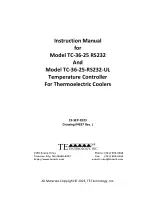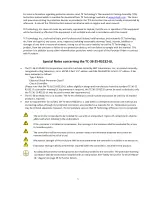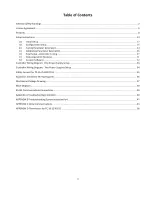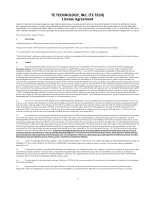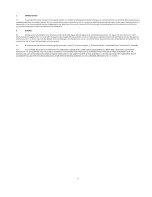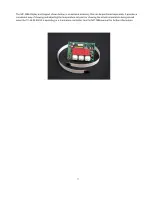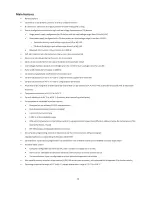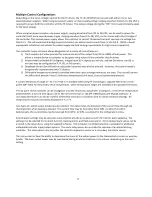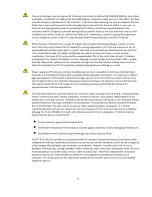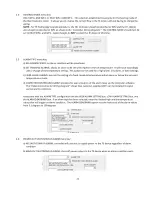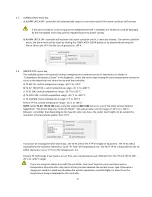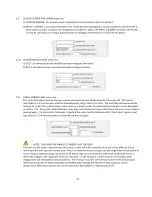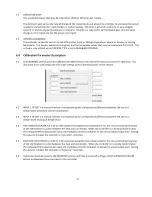
13
Setup Instructions
1.0
Initial Setup
Portions of the temperature controller (the aluminum frame near the output transistors, for example) can
exceed 60 °C during normal operating conditions. Temperatures greater than 60 °C can result in a hazard
to the user. Use caution! Protect against accidental contact with hot surfaces.
If the temperature controller is to be used under conditions such that its surface temperatures could
possibly exceed 60 °C, test the surface temperatures under the worst-case operating conditions of
maximum ambient temperature and highest output current and voltage. If any portion of the
temperature controller exceeds 60 °C place adequate guards around the temperature controller to
prevent contact with any hot surfaces.
NOTE: the maximum allowable ambient temperature for the controller is 60 °C. Furthermore, the
maximum allowable temperature of the controller base (underneath the transistor-mounting area) is 90
°C.
1.1
The TC-36-25 RS232 can run as a stand-alone controller, meaning that it can operate without the use of a
computer. However, a computer is required initially to set up various operating parameters.
Make sure the computer is
OFF
and the controller is
UN-POWERED
. Connect the RS232 Communications Port
from the controller (JP4) to the RS232 input (Serial Communications Port) on the computer. Pin 1 of JP4 is the
controller’s RX, Pin 2 of JP4 is the controller’s TX, and Pin 3 of JP4 is the controller’s shield.
When using the supplied RS-232 cable, connect the wires to JP4 as follows (see “
RS232 Communications
Connections
” for further information):
JP4-1: clear wire
JP4-2: red wire
JP4-3: black wire
1.2
Attach the thermistor to the temperature-control location.
Generally, attaching the thermistor to the cold side of the TE device provides better control stability than locating
it at the object, liquid, or air that is to be cooled/heated. However, in doing so, there will be a temperature
difference between the TE device and the object, liquid, or air that is to be cooled/heated. The temperature set
point can be adjusted to compensate for this temperature difference if necessary.

